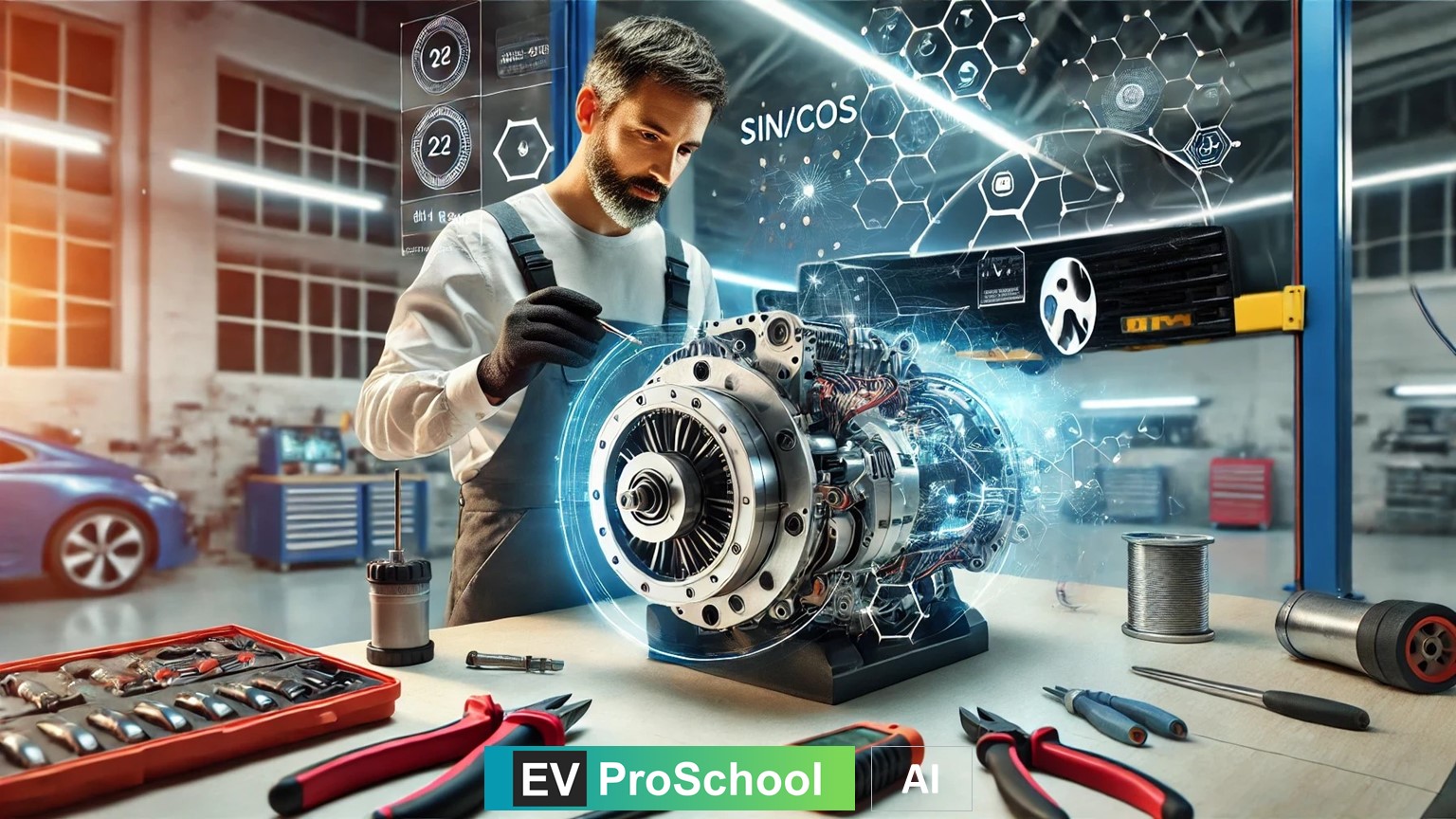The interior permanent magnet (IPM) motor is a popular choice for electric vehicles (EVs) due to its high efficiency, robust performance, and excellent torque characteristics. To ensure precise motor control, most IPM motors use sin/cos encoders, which provide position feedback necessary for smooth operation and accurate commutation. However, signal errors in these encoders can lead to degraded performance or even motor failure. Let’s explore the five main causes of sin/cos encoder signal errors in IPM motors and why understanding them is crucial for EV reliability.
Why This Matters
In EVs, seamless driving depends on precise motor control. Errors in encoder signals can cause:
- Reduced motor efficiency
- Vibrations or jerks during acceleration
- Overheating of the motor or power electronics
- Increased wear and tear
- System malfunctions
Addressing these issues early can save costs, enhance user experience, and extend the EV’s lifespan.
1. Misalignment of Encoder Components
How It Happens
A sin/cos encoder consists of a sensor and a magnetic or optical target. If these components are misaligned during installation or due to mechanical wear, the signals become inaccurate.
Impact
Misalignment leads to distorted waveforms that deviate from the ideal sinusoidal shape, resulting in errors in position and speed calculations.
Solution
- Use precision mounting techniques during installation.
- Regularly inspect and recalibrate the encoder.
2. Electromagnetic Interference (EMI)
How It Happens
IPM motors operate in high-voltage and high-current environments, which generate significant electromagnetic interference. If the encoder cables are not properly shielded, EMI can distort the signal.
Impact
Noise in the sin/cos signals can cause the motor controller to misinterpret position data, leading to erratic performance or faults.
Solution
- Use shielded cables for encoder wiring.
- Ensure proper grounding and cable routing away from high-power lines.
3. Temperature Extremes
How It Happens
EV motors operate in environments with wide temperature variations, from freezing winter mornings to hot summer days. Sin/cos encoders, especially those with electronic components, may suffer from thermal drift or component degradation under these conditions.
Impact
Thermal expansion and contraction can change the alignment of components or affect signal accuracy, causing cumulative errors over time.
Solution
- Choose encoders rated for automotive-grade temperature ranges.
- Monitor encoder temperatures and integrate thermal protection measures.
4. Mechanical Vibration and Shock
How It Happens
The harsh operating conditions of EV motors, such as sudden accelerations, road vibrations, and impacts, can loosen or damage encoder components.
Impact
Vibrations can introduce inaccuracies by disturbing the position of the encoder relative to the motor shaft, leading to phase shifts or signal distortions.
Solution
- Use encoders designed for high vibration resistance.
- Employ vibration dampers or isolators in the motor assembly.
5. Signal Degradation or Cable Damage
How It Happens
Sin/cos signals are analog, and their integrity depends on the quality of the transmission path. Physical damage to encoder cables, such as cuts, abrasions, or connector issues, can degrade the signals.
Impact
Degraded signals result in incorrect amplitude, phase shifts, or signal loss, which compromise motor control.
Solution
- Use high-quality, durable cables and connectors.
- Inspect and replace cables regularly, especially in high-stress areas.
Proactive Maintenance Is Key
Understanding these causes of sin/cos encoder signal errors allows EV manufacturers and service teams to design and maintain IPM motors for maximum reliability. By addressing these issues through robust design, quality components, and regular maintenance, the risk of signal errors can be minimized, ensuring a smooth and efficient driving experience for EV users.
Want to Learn More?
- What type of shielding should I use to protect the encoder from EMI?
- Understanding Sin/Cos Encoder Calibration in IPM Motors
- What are the best practices for maintaining Encoder calibration over time?



